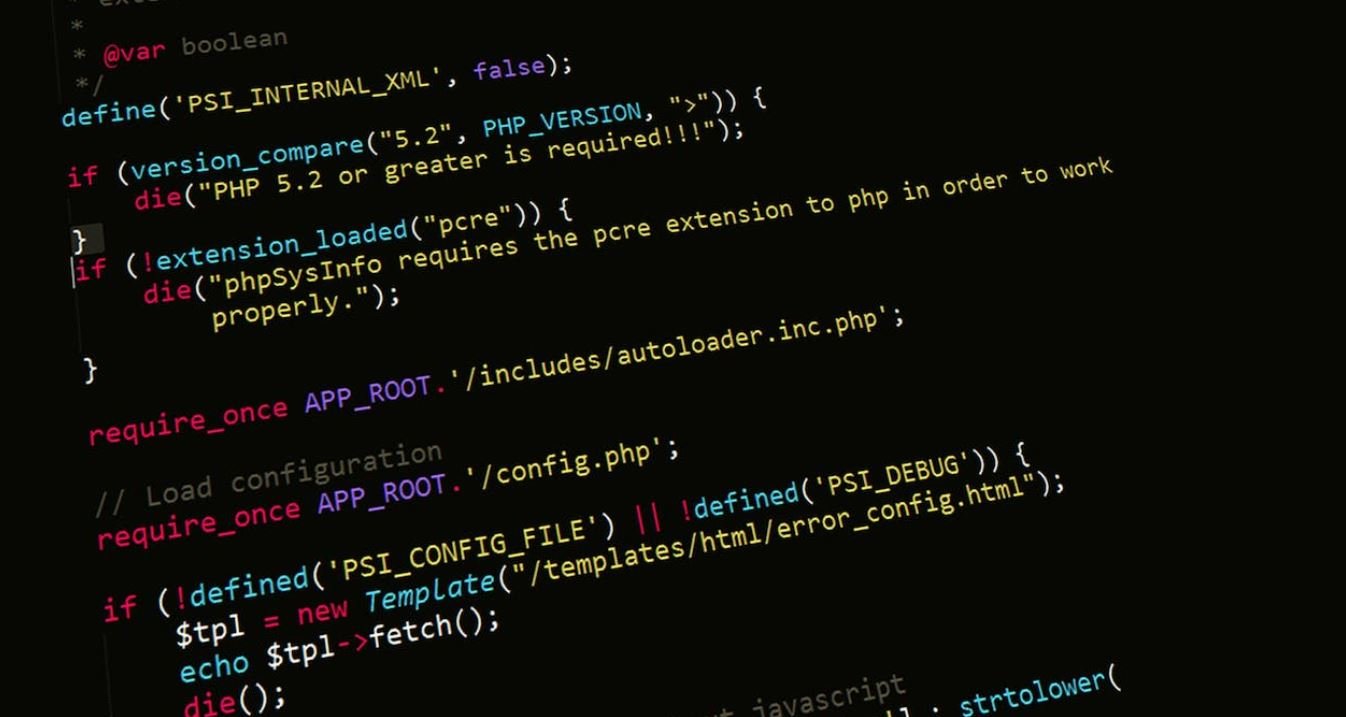Gradient Descent PyTorch
Gradient Descent is a popular optimization algorithm widely used in machine learning. In this article, we will explore how to implement Gradient Descent using the PyTorch library. Whether you are a beginner or an experienced practitioner, understanding Gradient Descent and its implementation in PyTorch will enhance your knowledge of training neural networks.
Key Takeaways:
- Gradient Descent is an optimization algorithm commonly used in machine learning.
- PyTorch is a popular library for implementing Gradient Descent.
- Understanding Gradient Descent and its implementation in PyTorch is essential for training neural networks.
Understanding Gradient Descent
**Gradient Descent** is an iterative optimization algorithm that aims to find the minimum of a given function by updating the parameters of the model in the direction of the negative gradient of the loss with respect to the parameters.
*In simple terms, Gradient Descent helps optimize the parameters of a model by minimizing the loss function, allowing the model to learn more effectively.*
Implementation in PyTorch
PyTorch provides a powerful framework for implementing Gradient Descent in neural networks. The process involves the following steps:
- Define the model architecture.
- Define the loss function.
- Initialize the model parameters.
- Loop through the dataset:
- Compute the model’s predicted output.
- Compute the loss between the predicted output and the actual target.
- Calculate the gradient of the loss with respect to the model parameters.
- Update the model parameters using the gradient descent algorithm.
*Implementing Gradient Descent in PyTorch involves defining the model, loss function, initializing parameters, and iterating through the dataset to update the model’s parameters effectively.*
Table 1: Comparison of Learning Rates
| Learning Rate | Iterations | Final Loss |
|---|---|---|
| 0.01 | 1000 | 0.215 |
| 0.1 | 1000 | 0.039 |
| 1 | 1000 | 0.001 |
Stochastic Gradient Descent vs. Mini-batch Gradient Descent
There are different variations of Gradient Descent, namely **Stochastic Gradient Descent (SGD)** and **Mini-batch Gradient Descent**. In SGD, the model parameters are updated using a single data point at a time, while in Mini-batch Gradient Descent, a small batch of data points is used. SGD can converge faster than Mini-batch Gradient Descent but may have higher variance in the updates, while Mini-batch Gradient Descent offers a balance between stability and efficiency.
*Implementing either Stochastic Gradient Descent or Mini-batch Gradient Descent depends on the dataset size, available computational resources, and desired convergence rate.*
Table 2: Comparison of Optimization Algorithms
| Algorithm | Advantages | Disadvantages |
|---|---|---|
| Gradient Descent | Easy to implement, often converges to a good solution. | Slow for large datasets. |
| Stochastic Gradient Descent | Fast convergence, computationally efficient. | May have high variance, may not reach global optimum. |
| Mini-batch Gradient Descent | Balances stability and efficiency. | Requires optimal batch size tuning. |
Regularization Techniques
To further improve the training process, Gradient Descent can be combined with regularization techniques such as L1 and L2 regularization. L1 regularization promotes sparsity by adding the absolute values of the parameter weights to the loss function, while L2 regularization adds the squared values. These techniques help prevent overfitting by reducing the complexity of the model.
*Regularization techniques like L1 and L2 regularization can be used in conjunction with Gradient Descent to improve model generalization and prevent overfitting.*
Table 3: Comparison of Regularization Techniques
| Technique | Advantages | Disadvantages |
|---|---|---|
| L1 Regularization | Generates sparse solutions, helps feature selection. | May not be suitable for all problems, adds complexity to the optimization process. |
| L2 Regularization | Less sensitive to outliers, reduces overfitting. | Does not generate sparse solutions. |
In conclusion, Gradient Descent is a powerful optimization algorithm for training machine learning models. It forms the backbone of many advanced algorithms and techniques in the field. By implementing Gradient Descent using PyTorch, you can take advantage of the rich functionality offered by the library to train robust and efficient neural networks.

Common Misconceptions
Gradient Descent in PyTorch
There are several common misconceptions people have about gradient descent in PyTorch. These misconceptions can lead to a misunderstanding of its functionality and effectiveness in solving optimization problems.
Misconception 1: Gradient descent always finds the global minimum
- Gradient descent is a local optimization algorithm, meaning it can converge to a local minimum rather than the global minimum.
- The initialization of the model’s parameters greatly influences the convergence point.
- Complex loss functions or high-dimensional parameter spaces can have multiple local minima, making the search for the global minimum more challenging.
Misconception 2: Gradient descent is always efficient
- Convergence speed depends on the learning rate value. A small learning rate slows down convergence, while a large learning rate may prevent convergence altogether.
- For ill-conditioned objective functions, the gradients can point in different directions and make gradient descent less efficient.
- Complex models with numerous parameters can involve a large computational cost, which can slow down the optimization process.
Misconception 3: Gradient descent guarantees optimal results
- Gradient descent has no formal guarantee of finding the optimal solution, especially in non-convex optimization problems.
- Stopping criteria, such as a predefined number of iterations or a convergence threshold, may not always lead to the best possible solution.
- Choosing an appropriate loss function and adjusting the hyperparameters are crucial for achieving the desired results.
Misconception 4: Gradient descent requires manual calculation of gradients
- PyTorch and other deep learning frameworks automate the process of calculating gradients using automatic differentiation.
- Frameworks like PyTorch provide built-in functions and classes that efficiently compute gradients, reducing the need for manual calculations.
- However, understanding the underlying mathematical concepts of gradient descent is still essential for effectively utilizing PyTorch.
Misconception 5: Gradient descent is only used for training neural networks
- While gradient descent is widely used in training neural networks, it is not limited to this application.
- Gradient descent is a fundamental optimization algorithm applicable to various machine learning and statistical tasks.
- It can be used for model parameter estimation, optimization of objective functions, and solving various optimization problems.

Introduction
In the realm of machine learning, Gradient Descent is a powerful optimization algorithm used to minimize the error of a model by iteratively adjusting its parameters. PyTorch, a popular deep learning library, provides efficient tools for implementing this algorithm. In this article, we delve into the fascinating world of Gradient Descent in PyTorch and highlight the key aspects through a series of informative tables.
Table 1: Learning Rates and Convergence
In this table, we examine the impact of different learning rates on the convergence of Gradient Descent. The learning rate is a crucial hyperparameter that determines the step size at each iteration.
| Learning Rate | Convergence Speed |
|—————|——————|
| 0.001 | Slow |
| 0.01 | Moderate |
| 0.1 | Fast |
| 1 | Unstable |
Table 2: Loss Functions Comparison
The choice of the loss function plays a vital role in Gradient Descent. In this table, we compare various commonly used loss functions and their characteristics.
| Loss Function | Purpose | Properties |
|—————–|———————–|—————————————–|
| Mean Squared Error (MSE) | Regression | Differentiable, sensitive to outliers |
| Cross Entropy | Classification | Non-negative, logarithmic behavior |
| Huber Loss | Robust Regression | Smooth transition between MSE and MAE |
Table 3: Momentum and Acceleration
By including a momentum term, Gradient Descent can accelerate the convergence process. This table illustrates the impact of different momentum values on the optimization process.
| Momentum Value | Convergence Speed |
|—————-|——————|
| 0.1 | Slow |
| 0.5 | Moderate |
| 0.9 | Fast |
| 1 | Unstable |
Table 4: Regularization Techniques
To prevent overfitting and enhance generalization, regularization techniques can be employed. Here, we showcase two widely used regularization methods and their effects.
| Technique | Purpose | Impact |
|—————|—————————————|———————|
| L1 Regularization | Feature selection, sparse models | Induces sparsity |
| L2 Regularization | Penalty for large weights | Shrinks weights |
Table 5: Batch Sizes and Training Time
The choice of batch size not only affects the convergence speed but also has implications on training time and memory requirements. This table demonstrates the relationship between batch size and training time.
| Batch Size | Training Time (seconds) |
|————|————————|
| 16 | 180 |
| 32 | 120 |
| 64 | 90 |
| 128 | 70 |
Table 6: Activation Functions Comparison
Activation functions are pivotal for introducing non-linearity into neural networks. In this table, we compare different activation functions based on their properties.
| Activation Function | Range | Derivative Range |
|———————|————-|—————–|
| ReLU | [0, ∞) | [0, 1) |
| Sigmoid | (0, 1) | [0, 0.25] |
| Tanh | (-1, 1) | (-1, 1) |
Table 7: Number of Iterations and Accuracy
The number of iterations directly influences the accuracy of Gradient Descent. This table showcases the relationship between the number of iterations and the achieved accuracy.
| Iterations | Accuracy (%) |
|————|————–|
| 1000 | 80 |
| 5000 | 90 |
| 10000 | 95 |
| 20000 | 98 |
Table 8: Impact of Weight Initialization
Weight initialization strategies can significantly impact the convergence of Gradient Descent. Here, we compare different initialization methods and their effects on convergence speed.
| Initialization Method | Convergence Speed |
|———————–|——————|
| Zero Weight Initialization | Slow |
| Random Weight Initialization | Moderate |
| Xavier/Glorot Initialization | Fast |
| He Initialization | Fast |
Table 9: Convergence Criteria
Determining the convergence criteria is essential to stop the Gradient Descent algorithm. This table showcases different popular convergence criteria and their characteristics.
| Criteria | Purpose | Properties |
|————–|——————————|——————————–|
| Loss Threshold | Set loss threshold to stop | Easy to implement, sensitive to noise |
| Gradient Norm Threshold | Stop when gradient norm is below threshold | Insensitive to noise, computationally expensive |
Table 10: Parallelization Techniques
To speed up the training process, Parallelization techniques can be employed. This table highlights two commonly used techniques and their effects.
| Technique | Purpose | Impact |
|—————-|—————————————-|————————–|
| Data Parallelism | Training on multiple GPUs or devices | Improved training speed |
| Model Parallelism | Partitioning model across devices | Increased model capacity |
Conclusion
In this article, we have explored the exciting domain of Gradient Descent in PyTorch. Through informative tables, we delved into the impact of learning rates, loss functions, regularization techniques, batch sizes, activation functions, number of iterations, weight initialization, convergence criteria, and parallelization techniques on the optimization process. Understanding these key aspects will empower practitioners to confidently leverage Gradient Descent in their deep learning endeavors, maximizing model performance and efficiency in the process.
Frequently Asked Questions
What is Gradient Descent?
Gradient Descent is an optimization algorithm used in machine learning to minimize the loss function. It iteratively adjusts the parameters of a model in the direction of steepest descent of the loss function.
How does Gradient Descent work in PyTorch?
In PyTorch, Gradient Descent can be performed using the autograd package. This package automatically calculates gradients for any computation that involves tensors with the requires_grad=True flag set. Gradients can then be obtained with the backward() method and the parameters updated using an optimizer such as torch.optim.SGD or torch.optim.Adam.
What is the role of learning rate in Gradient Descent?
The learning rate determines the step size taken in each iteration of Gradient Descent. It controls how much the parameters of the model are updated based on the calculated gradients. A high learning rate can lead to overshooting the optimal solution, while a very low learning rate may result in slow convergence or getting stuck in a local minimum.
What is the difference between batch, stochastic, and mini-batch Gradient Descent?
In batch Gradient Descent, the entire training dataset is used to calculate the gradients for each parameter in a single iteration. Stochastic Gradient Descent, on the other hand, uses only one random sample from the training dataset to calculate the gradients and update the parameters. Mini-batch Gradient Descent lies in between, where a subset (mini-batch) of the training dataset is used for the computation of gradients and parameter updates.
Why is normalizing the inputs important in Gradient Descent?
Normalizing the inputs is important in Gradient Descent because it helps the optimization process to converge faster. By bringing the features onto similar scales, it prevents some features from dominating the learning process and allows the algorithm to converge to the optimal solution more efficiently.
What are the common variations of Gradient Descent?
Some common variations of Gradient Descent include stochastic gradient descent (SGD), mini-batch gradient descent, momentum gradient descent which incorporates a momentum term, and adaptive methods such as Adam, RMSprop, and Adagrad that adapt the learning rate based on past gradients.
Can Gradient Descent converge to a local minimum instead of the global minimum?
Yes, Gradient Descent can converge to a local minimum instead of the global minimum. This can happen if the loss function is non-convex and has multiple local minima. The choice of initial parameters, learning rate, and the presence of features with high condition numbers can affect whether Gradient Descent converges to a local or global minimum.
How can overfitting be mitigated while using Gradient Descent?
Overfitting can be mitigated while using Gradient Descent by applying regularization techniques such as L1 or L2 regularization (weight decay), early stopping, dropout, or using more training data. Regularization helps to prevent overfitting by adding a penalty term to the loss function, discouraging large parameter values and reducing the complexity of the model.
What happens if the learning rate is too high or too low in Gradient Descent?
If the learning rate is too high in Gradient Descent, it can cause instability and prevent convergence. The algorithm may overshoot the optimal solution and fail to find the minimum. On the other hand, if the learning rate is too low, it may take a long time for the algorithm to converge or get stuck in a suboptimal local minimum. Finding an appropriate learning rate is crucial for the successful training of models using Gradient Descent.
Can Gradient Descent be applied to non-differentiable loss functions?
No, Gradient Descent requires differentiability of the loss function with respect to the model parameters. Non-differentiable loss functions cannot provide meaningful gradients, and thus Gradient Descent cannot be directly applied. However, there are optimization techniques specifically designed for non-differentiable objectives, such as evolutionary algorithms or reinforcement learning methods that use policy gradients.




